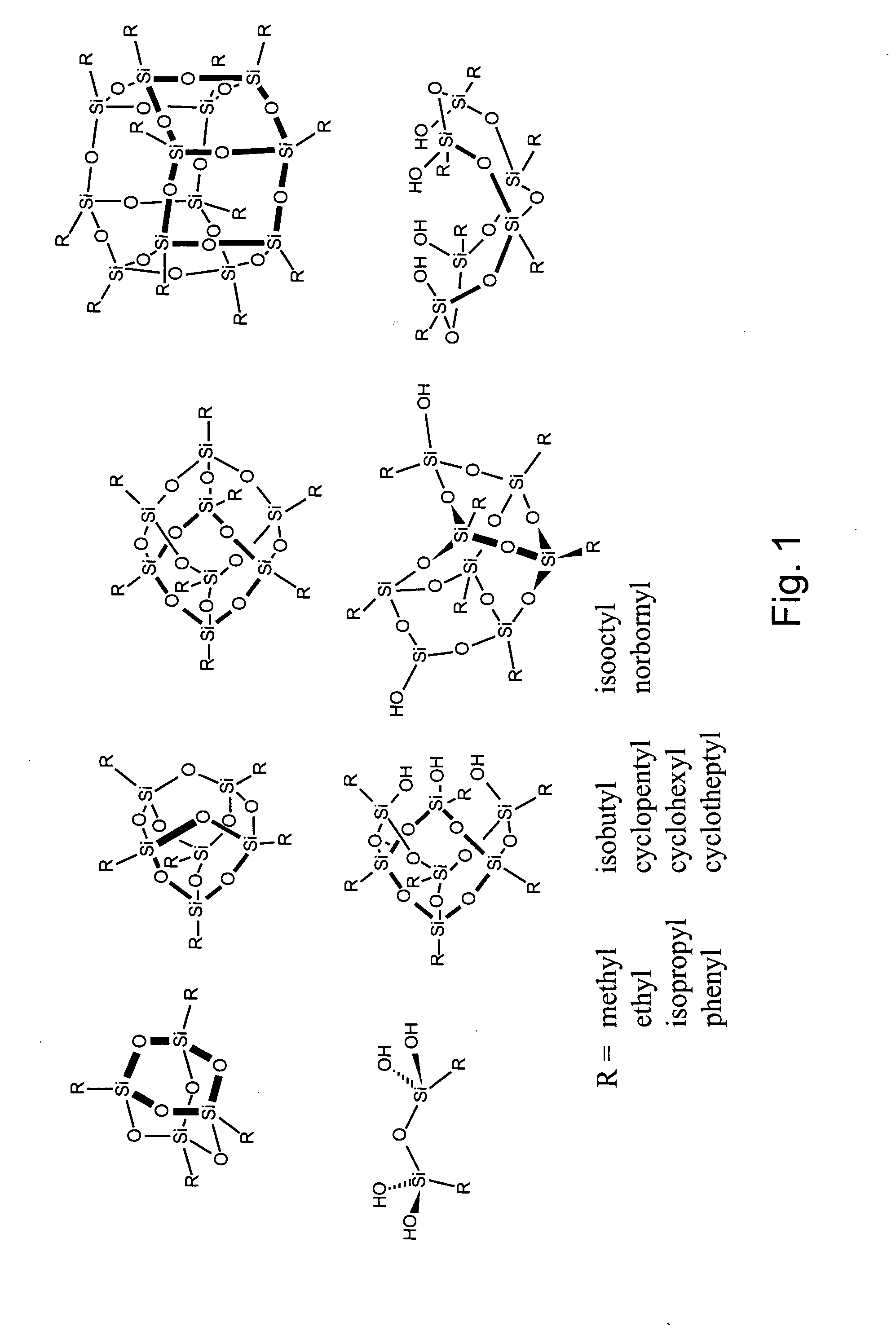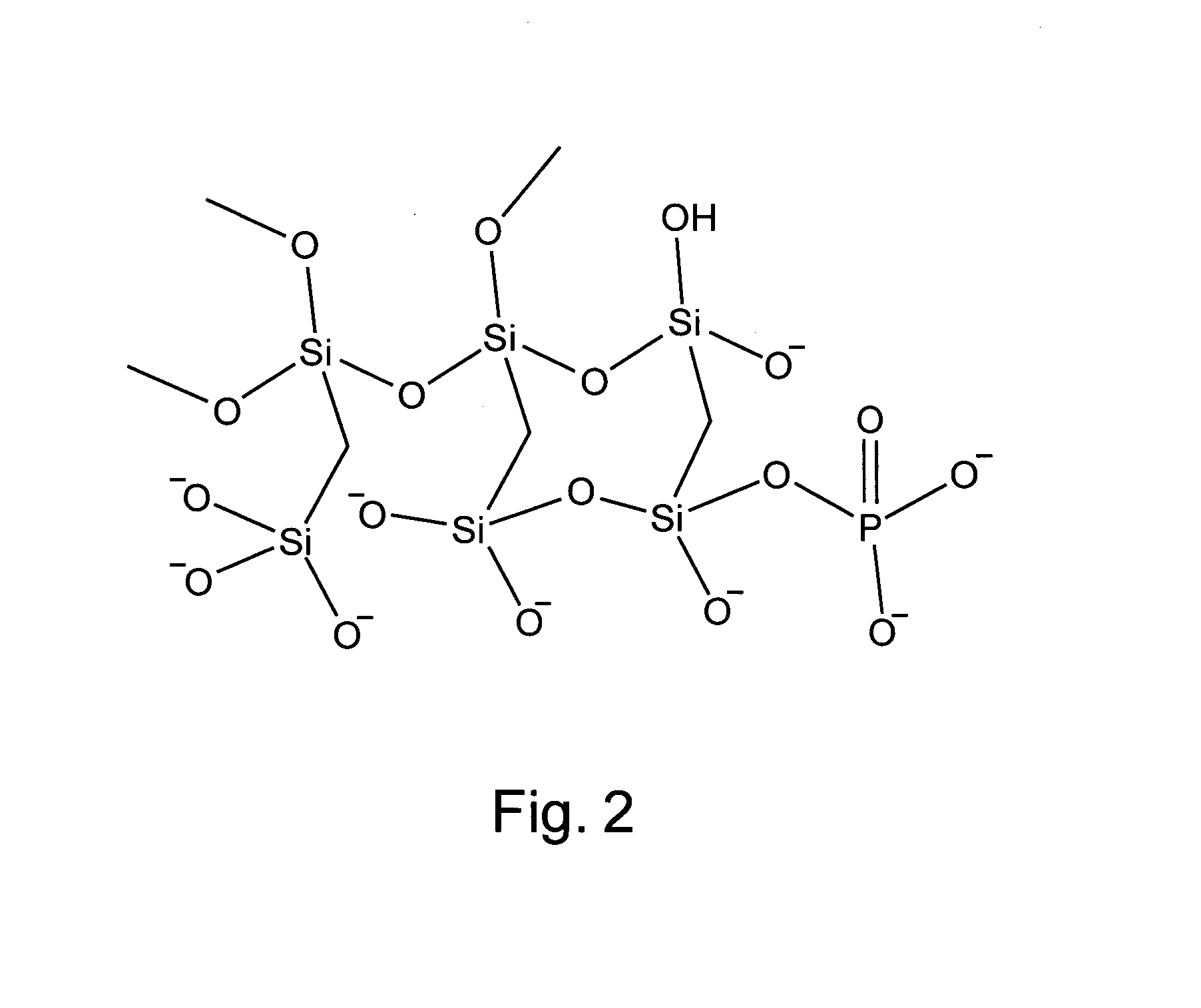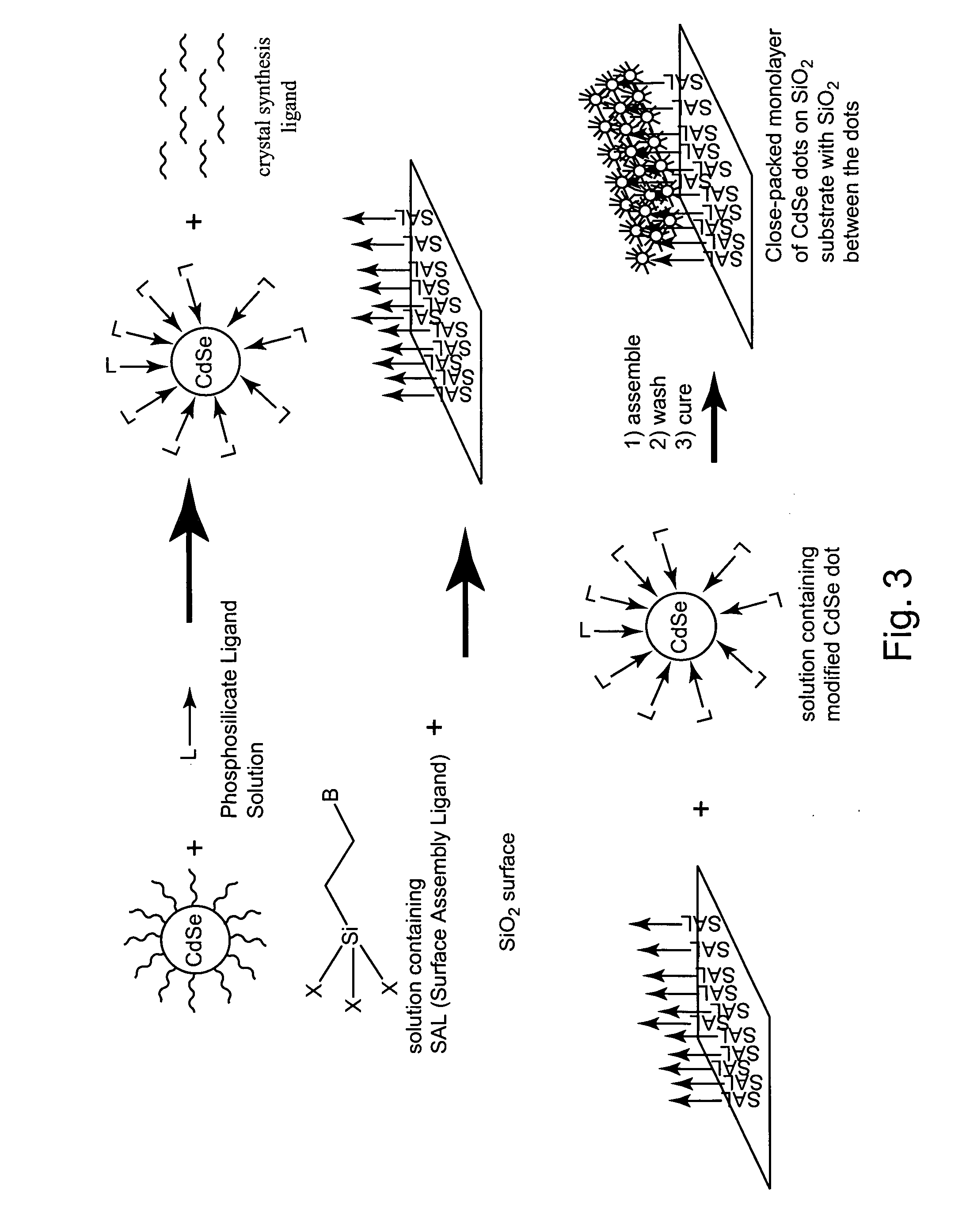Compositions and methods for modulation of nanostructure energy levels
a technology of energy level and nanostructure, applied in the field of nanotechnology, can solve the problems of large and/or disordered and/or low density packing nanoparticles, high cost (high temperature, high vacuum), and the thickness of the nanostructure generated by these and other standard core-shell synthetic techniques is not thick enough to confine a charge in the core. , to achieve the effect of increasing the level of the highest occupied molecular orbital (homo) and reducing the homo level
- Summary
- Abstract
- Description
- Claims
- Application Information
AI Technical Summary
Benefits of technology
Problems solved by technology
Method used
Image
Examples
example 1
Preparation of Closely Packed Nanostructure Monolayers
[0221]A method for preparing a substrate having closely packed nanostructures is depicted schematically in FIGS. 3 and 4. A nanodot (depicted as a sphere) is synthesized with surfactants that coat the surface. The surfactants are ligand-exchanged for the silsesquioxane or other silicate ligand (L).
[0222]A selected substrate (e.g., a silicon dioxide wafer) is coated with a silane ligand bearing a nanostructure binding head group (B). The silane ligands interact and associate into a self assembled monolayer of surface assembly ligand (SAL) on the substrate surface, providing a nanostructure-binding interface (as indicated by the perpendicular arrows). An exemplary surface assembly ligand includes a cyclic dimethyl amino moiety and a SiMe2 group coupled together via a linker (cyclic dimethyl amino-organic spacer-SiMe2).
[0223]The ligand exchanged nanodots are then put on the SAL substrate by spin coating or dip coating with the solve...
example 2
Synthesis of Heptacyclopentyl Poss Disilanol Diethoxyphosphate
[0224]Synthesis of the exemplary polyhedral oligomeric silsesquioxane (POSS) ligand heptacyclopentyl POSS disilanol diethoxyphosphate 2 was performed as provided herein (FIG. 6). All procedures were carried out under an inert atmosphere using Sclilenk technique. The solvents were dried over 4 Å molecular sieves and degassed with three freeze-vacuum-thaw cycles. The heptacyclopentyl POSS trisilanol 1 was dried by static vacuum in a dessicator with phosphorous pentoxide for 12 hours, and diethyl chlorophosphonate (Cl—P(O)(OEt)2 was vacuum transferred before use. Mass spectrometry was performed at Scripps Research Institute in La Jolla, and 31P {1H} NMR spectroscopy was performed with a Bruker FT NMR using 31P at 162 MHz.
[0225]The reaction was set up in a 50 mL Schlenk flask. Heptacyclopentyl POSS trisilanol 1 (1.00 g, 1.14 mmol) was dissolved in a combination of toluene (10 mL) and triethylamine (15 mL) and produced a clear...
example 3
Generation of a Monolayer of Coated Nanostructures on a SAM
[0230]The controlled self-assembly of monolayers of nanocrystals with silsesquioxane or silicate ligands tailored for charge storage applications can be achieved by various wet-process methods, such as the deposition onto self-assembled monolayers (SAMs). This approach can be used to prepare monolayers having close packed nanostructure arrays, and preferably ordered close-packed nanostructure arrays.
[0231]A self assembled monolayer consisting of a silane ligand with a binding head for the silsesquioxane or silicate ligand is applied to a substrate surface. The nanocrystals are deposited on the SAM from solution by spin-, dip-, or spray-coating, or conventional printing technologies. The excess dots are washed off the substrate resulting in a monolayer of nanocrystals insulated with silicon dioxide containing ligands.
PUM
| Property | Measurement | Unit |
|---|---|---|
| Composition | aaaaa | aaaaa |
| Electronic properties | aaaaa | aaaaa |
| Electric charge | aaaaa | aaaaa |
Abstract
Description
Claims
Application Information
 Login to View More
Login to View More - R&D
- Intellectual Property
- Life Sciences
- Materials
- Tech Scout
- Unparalleled Data Quality
- Higher Quality Content
- 60% Fewer Hallucinations
Browse by: Latest US Patents, China's latest patents, Technical Efficacy Thesaurus, Application Domain, Technology Topic, Popular Technical Reports.
© 2025 PatSnap. All rights reserved.Legal|Privacy policy|Modern Slavery Act Transparency Statement|Sitemap|About US| Contact US: help@patsnap.com



